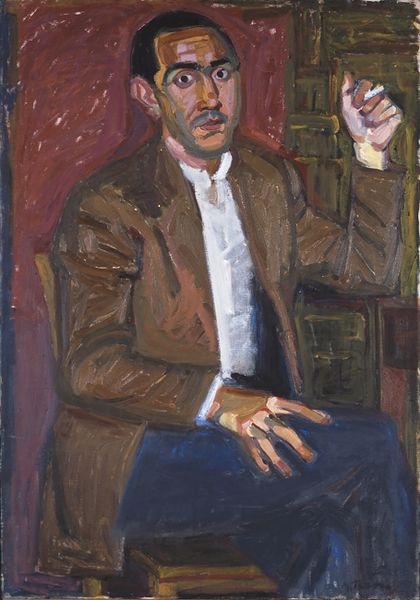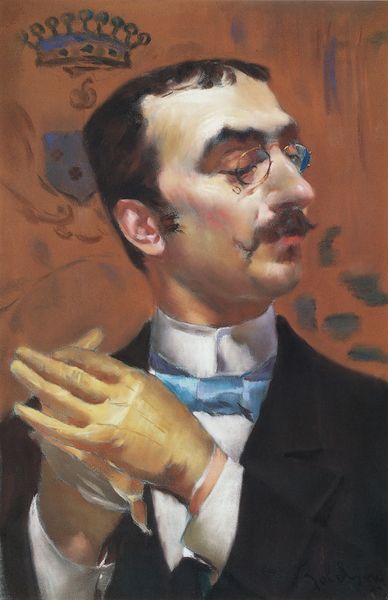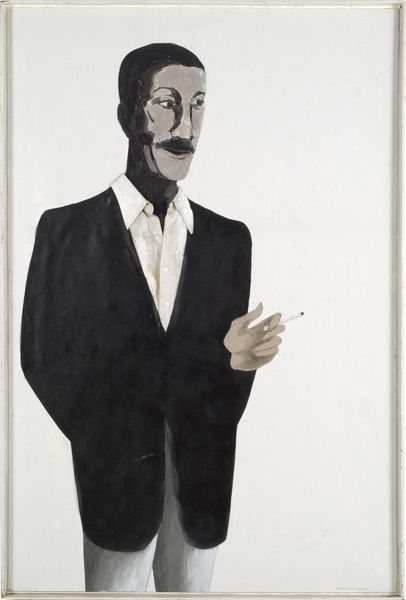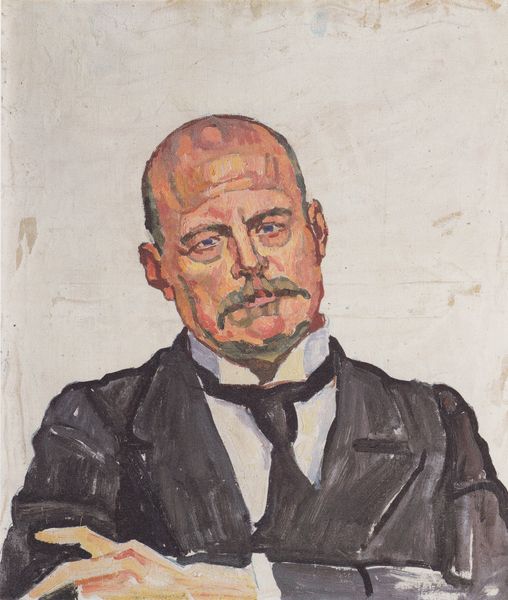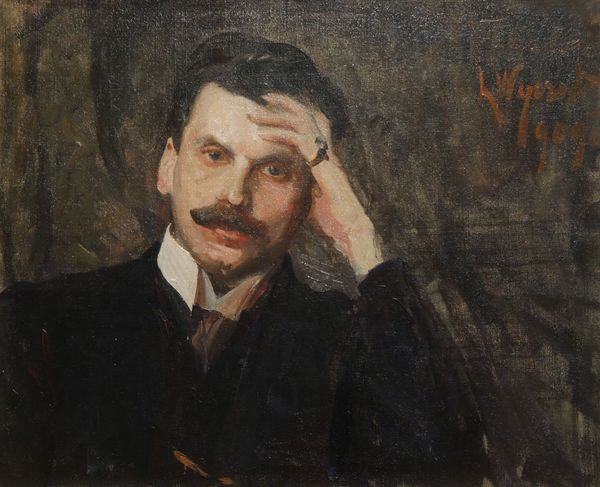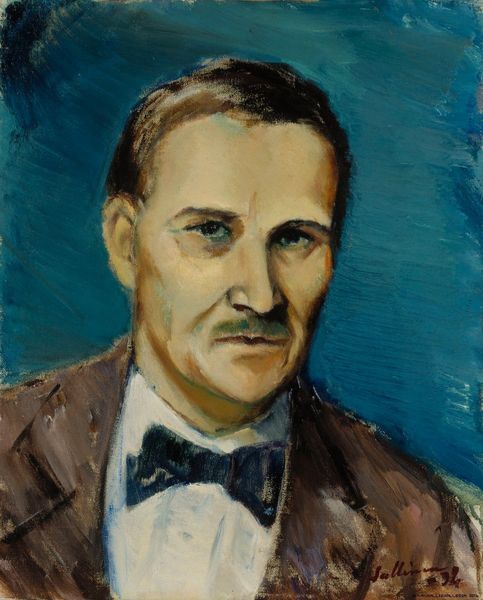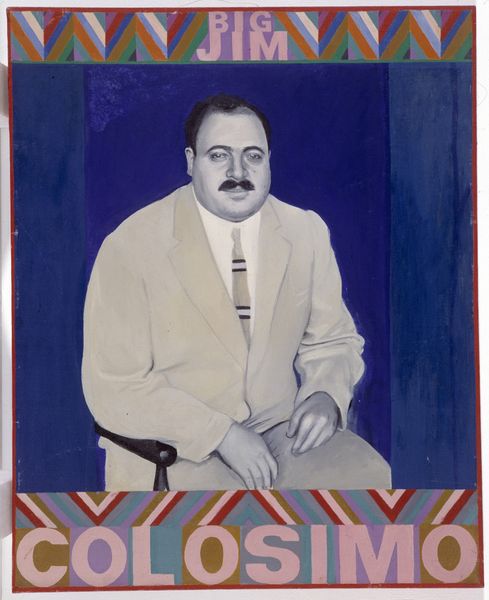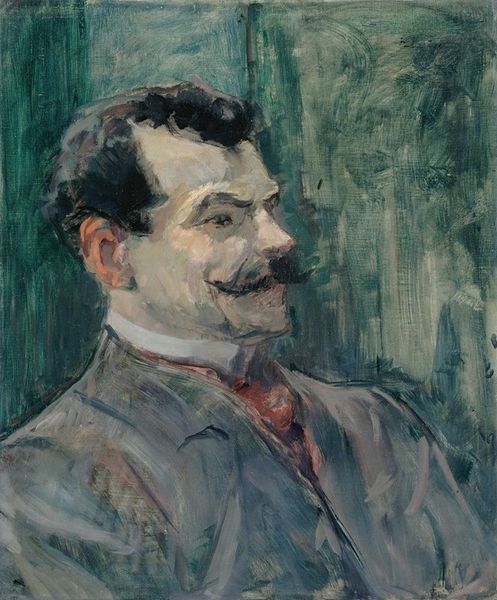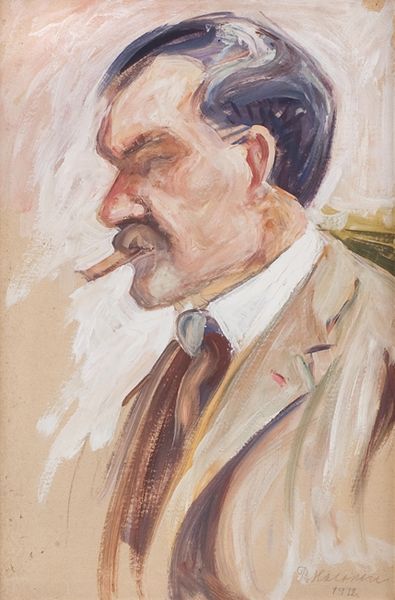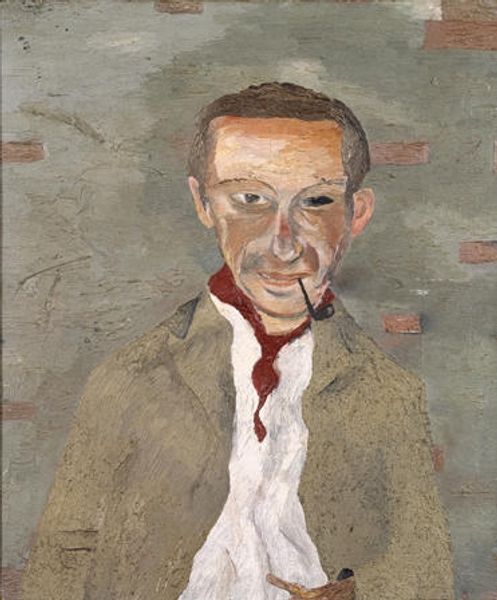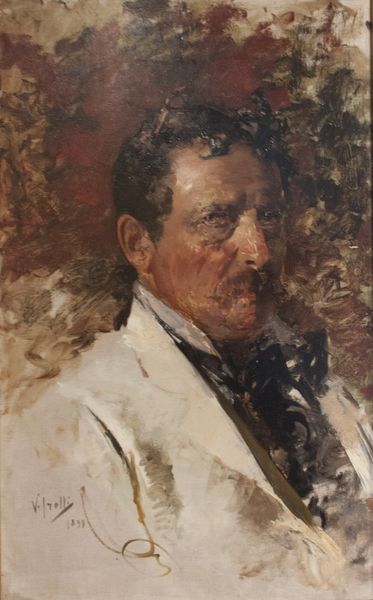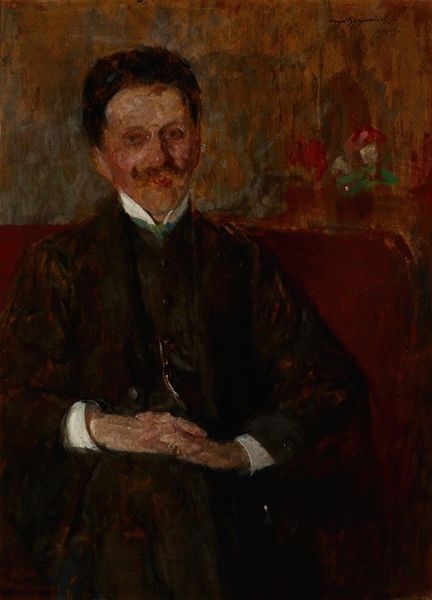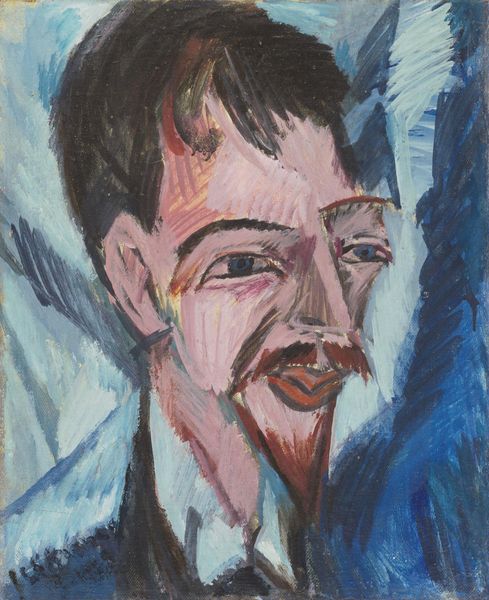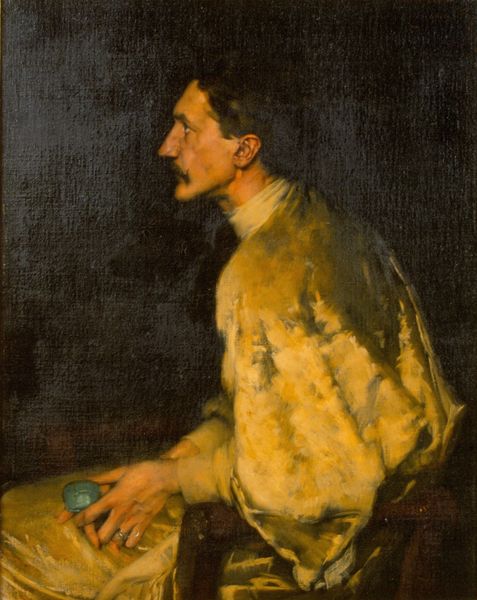
painting, oil-paint, impasto
#
portrait
#
painting
#
oil-paint
#
oil painting
#
impasto
#
portrait art
#
modernism
Dimensions: 223.52 x 198.12 cm
Copyright: Enrique Martínez Celaya,Fair Use
Curator: Immediately I sense a disquiet. An official portrait, but there’s something not quite settled, uneasy. Editor: Exactly! Let's dive into Enrique Martinez Celaya's "The Artist (Edvard Munch)," painted in 2016, crafted using oil paint, its presence is commanding. It feels like peering into a mirror reflecting more than just an image. Curator: I am drawn to the black forms floating in the background and framing the face. They create a kind of emotional claustrophobia that echoes Munch's themes of anxiety and existential dread. Their irregular edges and the patches of bright colors make them resemble ghostly figures, perhaps even harbingers. What do you sense? Editor: Ghostly is right. They dance around this figure like tormented thoughts. Look at the palette– mostly muted greys and blacks that amplify a sense of unease and foreboding, while at the same time, you're transfixed, like in a stare down. The hands are so subtly rendered yet they are highlighted, as if a focal point. Curator: Those hands do grab your attention, don't they? Clasped loosely but seeming fragile somehow. In iconography, hands often represent action or a specific purpose. Here, their lack of defined activity adds to the overall ambiguity of the painting, an interesting reflection given Munch's active involvement in art movements in his life. It begs the question of what a person does with their purpose and how the search, or realization of the goal transforms someone's being. Editor: Absolutely! Celaya has beautifully distilled a whole complex story into this impastoed vision. I find the texture inviting, almost like I want to reach out and trace the outlines. Is it a memory? A premonition? The composition makes one ponder at what could become of its subject in time. There's such palpable psychological weight. Curator: Indeed. The use of a historical figure anchors it, but the emotional openness speaks to the artist's continuous dialogue between history, memory, and personal reckoning. Editor: I think, it invites each viewer to bring their own baggage to this dialogue as well. Thank you. Curator: My pleasure, it leaves so much for contemplation, even beyond this moment.
Comments
No comments
Be the first to comment and join the conversation on the ultimate creative platform.
